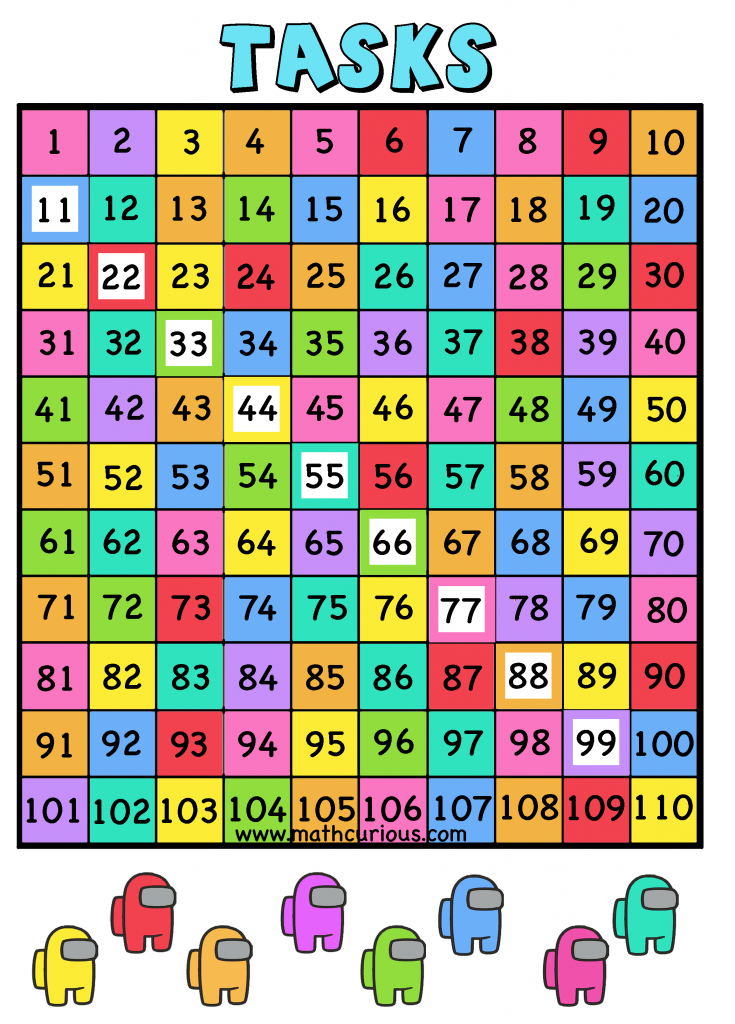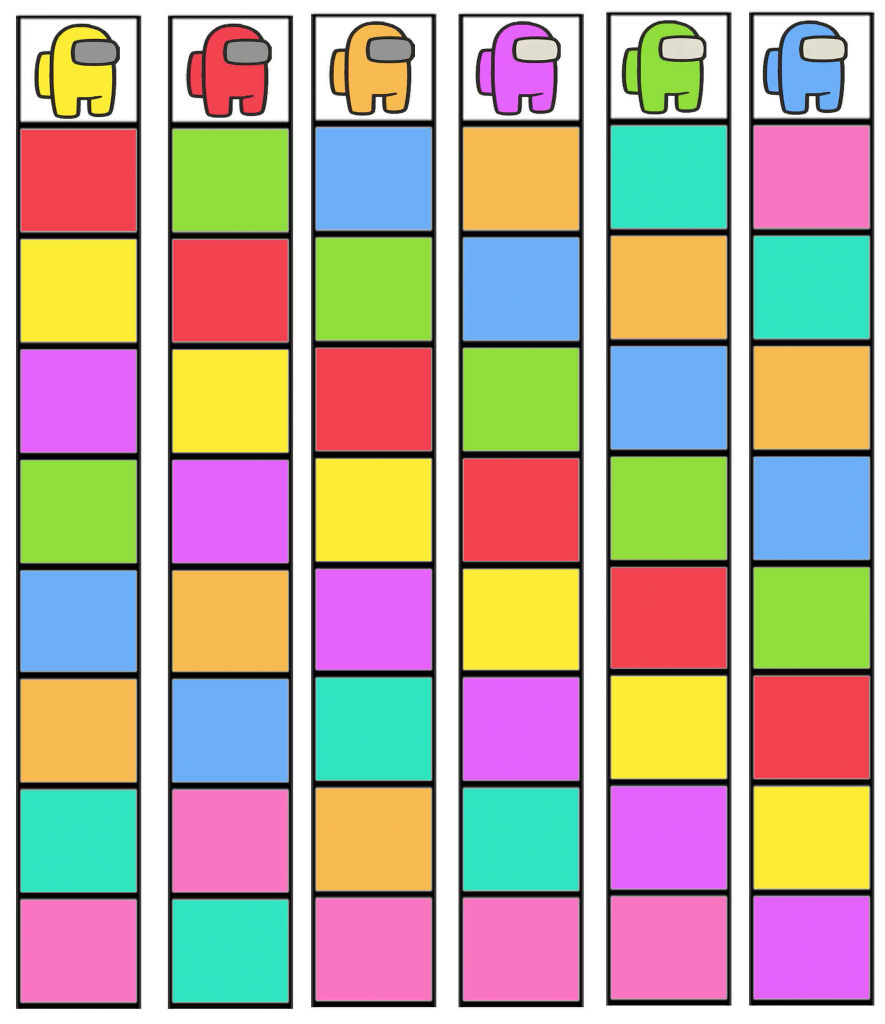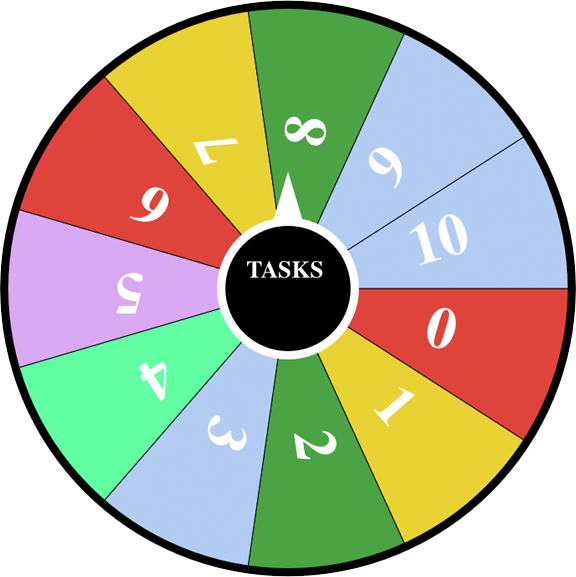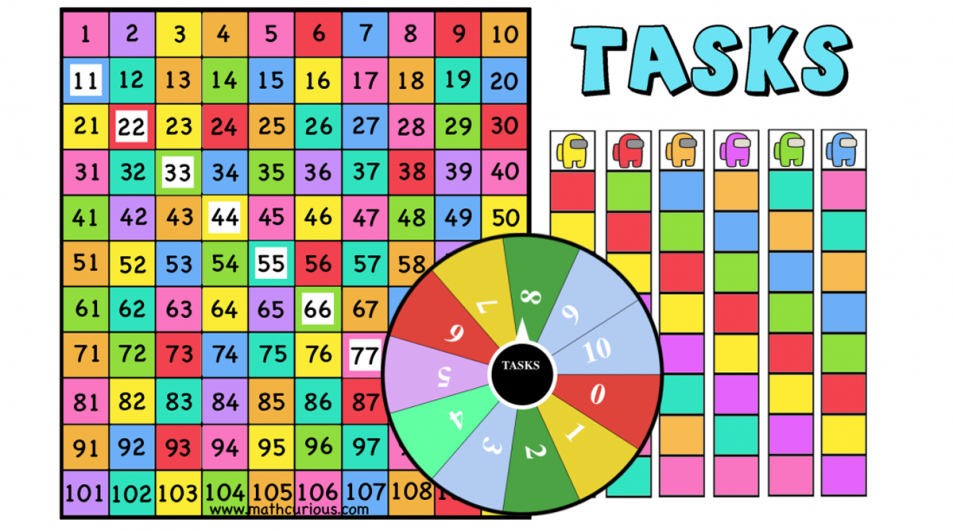Today I would like to share a fun multiplayer game that my youngest son and I created for students to practice place value and gain fluency with the 1-110 chart. It’s a fun way to practice place value, order of numbers, addition, subtraction, number patterns, and more. The game has an among us theme since this game is very popular among students but you can play it without that theme as well. Print and google slides version is available. The google slides version of the game uses a spinner instead of a dice. The game can be played in two ways,
Game 1 is for grades 1,2 to practice place value and order of numbers.
Game 2 is for Grades 2 and 3 to practice addition and subtraction.

The base of the game is a 110 chart with the tiles colored randomly in 8 different colors. The numbers formed by the same digits, 11,22,33,44 55,66,77,88,99 are white with a colored border. The players choose an Among us character and take a task card each.


The task cards have all 8 colors. The colored tiles on their task card represent the tasks that their character needs to complete.
Game 1- Grades 1,2
The players take turns rolling 10 face dice (1-10) once for tens and once for ones. They form the number. (you can also use two piles of number cards like Uno cards or playing cards) Every time they roll they find the number on the table. They then mark the color of that number on the task card. This means that this task is complete. If your roll gives you a number with a color/task already marked you just wait for your next turn. For a longer game, you can decide that the tasks need to be completed in order. That is why the colors on the task cards are in a different order.
Goal
The goal is to be the first to complete all the tasks/mark all the colors.
The imposter
When a player rolls a two digit number with the same number for tens and ones (22, 33, 44, 55, 66, 77, 88, 99) the imposter appears and sabotages the players’ tasks. All the two digit numbers with the same digit for tens and ones on the table are marked white with a colored border. Look at the color of the border. All the players that have that color/task marked on their task cards have to unmark it.
The table goes up to 110 since the players can roll 10 for tens and 10 for ones which makes 110.
Play with the whole class.
We have modified the game 1 to play with the whole class as well. Every students gets a task cards (numbered task cards). All the task cards are different. You can project the game board (table) on the smartboard or have a board/table in the middle of each group. The teacher or student rolls the dice. The players that have the color on their task cards unmarked mark it. The rest is the same. When the dice shows a number with both digits the same the players that have that color marked on their task cards have to unmark it.(imposter) The first player or players to mark all their tasks win.
Google slides version
If you are virtually teaching use the google slides version of the game, You can play in groups or with the whole class. To play with the whole class, all the students will have the board on a slide and you can asign a task card to each student. (numbered task cards) Since the cards are numbered each student can have the card with their student number.
Game 2 -Grades 2, 3
The players start form number 1 (place their markers), they take turns rolling two different colors 10 face dice, one for tens and one for ones. (you can also use two piles of number cards like Uno cards or playing cards) They form a number and they add or subtract the number from/to the number of the tile they are on with the help of the table. They then mark the color of that number on the task card. This means that this task is complete. When the number they roll takes them out of the table, the players have to choose the opposite operation if possible or flip the digits of the rolled number. For example if you are on 80 and you roll 35 you cannot add the number but you can subtract. However, if you are on 45 and you roll 75 you will be out of the table even if you subtract. In this case, and only in this case you can flip the digits and turn 75 into 57. Sometimes this will not be possible. If you are on 50 and you roll 87 for example there is nothing you can do. In this case you just wait for your next turn. If your roll gives you a number with a color/task already marked you just wait for your next turn.
If you land in the imposter tile then you need to unmark that color task. (just you not all players)
Goal
The goal is to be the first to complete all the tasks/mark all the colors.
The imposter
When a player rolls a two-digit number with the same number for tens and ones (22, 33, 44, 55, 66, 77, 88, 99) the imposter appears and sabotages the players’ tasks. All the two-digit numbers with the same digit for tens and ones on the table are marked white with a colored border. Look at the color of the border. All the players that have that color/task marked on their task cards have to unmark it.
How to use the 1-100 table for addition and subtraction.
The 1-100 chart is a great way to practice addition and subtraction since it helps students see patterns and understand regrouping. If you are at 67 and you need to add 32, you can jumb 3 tens ahead 77, 87, 97 and then move two more (ones). With practice the students start to see the pattern of adding 10, 20, 9,19,29 , 12 and so on. They practice useful mental strategies that will help them later on.
We hope that you find these games useful. Find the free print and google slides version below.

